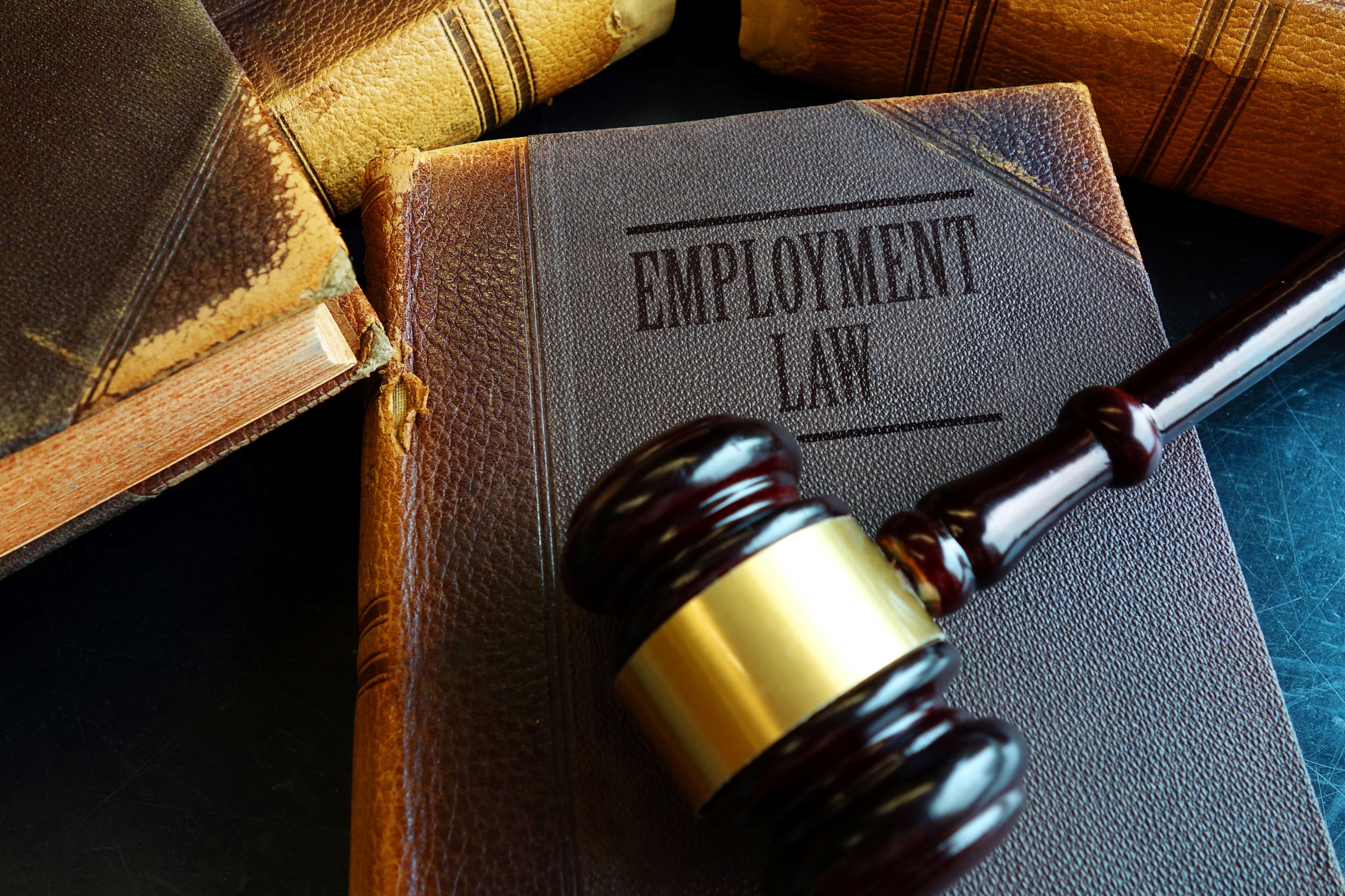Wrongful termination claims are serious, and the outcome often hinges on the quality of evidence you bring to the table. If you’ve been fired and believe it was for an unlawful reason, like discrimination, retaliation, or whistleblowing, the right documentation makes a huge difference.
In this post, we’ll break down the types of evidence you need, how the legal process works, and when to involve an attorney for wrongful termination.
What Is Considered Wrongful Termination?
If you’re wondering whether you have a case, let’s start with the basics. Wrongful termination refers to being fired for reasons that violate state or federal employment laws. This could include discrimination based on race, gender, disability, religion, or age; retaliation for reporting harassment or safety violations; or being terminated for taking protected leave under laws like the Family and Medical Leave Act (FMLA).
Even if you’re an at-will employee, which most workers in the U.S. are, your employer can’t terminate you for reasons that break the law. It’s important to understand the relationship between at-will employment and wrongful termination exceptions.
Employers have broad discretion to fire employees, but they can’t violate federal anti-discrimination laws or state public policy protections in doing so. That’s when speaking with an experienced attorney for wrongful termination becomes critical.
What Are the Main Types of Evidence in a Wrongful Termination Case?
Now that you understand what constitutes wrongful termination, let’s explore the evidence you’ll need to prove your case. Your claim’s success hinges on proving your termination broke the law.
Many people ask what documentation matters most. Here are the five essential types of evidence you need:
To prove wrongful termination, you need five types of evidence:
- Written documents (employment contracts, termination letters, performance reviews)
- Witness statements from coworkers who observed discriminatory behavior
- Communication records (emails, messages showing bias or retaliation)
- Performance and attendance records proving good standing
- EEOC documentation if discrimination is involved
1. Written Documents
Start by collecting all documents related to your employment. These may include:
- Your employment contract or offer letter
- The company’s employee handbook or HR policies
- Your termination letter or dismissal notice
- Performance reviews, promotions, or disciplinary write-ups
- Emails or messages related to your termination
Written records show if your employer followed their own policies or contradicted prior evaluations. For example, a sudden claim of poor performance, despite recent glowing reviews, can suggest a hidden motive.
2. Witness Statements
Coworkers and supervisors can play a major role in supporting your version of events. Witnesses might confirm:
- A pattern of bias or unfair treatment
- Sudden changes in behavior by supervisors
- What was said in termination meetings or evaluations
Statements from people who observed workplace interactions or overheard discriminatory remarks can add powerful support to your claim.
3. Communication Records
Email and messaging apps can often reveal the real reason behind a termination. Look for:
- Incriminating or biased language
- Contradictions between private conversations and official reasons for termination
- Comments that show retaliation for reporting issues
For example, if a manager said they were “tired of your complaints” after you reported harassment, that communication could be an important piece of evidence.
4. Performance and Attendance Records
Your employer might claim that your performance or attendance was the issue. That’s why it’s important to keep:
- Copies of your past performance reviews
- Recognition or awards received
- Attendance logs or timesheets
If these records show consistent positive evaluations or strong attendance, they can discredit your employer’s explanation.
5. EEOC Charge and Investigation
If you believe your firing was due to discrimination or retaliation, you may need to file a charge with the U.S. Equal Employment Opportunity Commission (EEOC).f There’s a direct relationship between EEOC complaints and wrongful termination claims. In most cases, you need to file an EEOC complaint before you can file a federal lawsuit.
Your EEOC evidence may include:
- A signed charge of discrimination
- A timeline showing you filed within the 180- or 300-day deadline (depending on state law)
- The EEOC’s determination, which may include a finding of “reasonable cause”
- A right-to-sue letter, if issued
These documents help demonstrate that a federal agency deemed your case valid enough to pursue.
How Do You Prove the Firing Was Illegal?
Once you’ve gathered your evidence, the next step is understanding how courts evaluate wrongful termination cases. To prove that your termination was unlawful, you need to do more than just show that you were let go. You must connect the termination to a legally protected reason, such as discrimination, retaliation, or violation of public policy.
Courts often use the McDonnell Douglas burden-shifting framework to evaluate these claims. It’s a widely used legal standard in wrongful termination and employment discrimination cases because it gives structure to the process of proving discrimination. Here’s how it works in practice:
- Establish a prima facie case Show that you were part of a protected class (e.g., based on race, gender, age), that you were qualified for your job, and that you were terminated under circumstances that suggest bias. For example, if your position remained open or was filled by someone with similar or lesser qualifications outside your protected class, that may be enough to raise suspicion.
- The employer must provide a legitimate reason After you present a prima facie case, your employer has the opportunity to explain the firing. This reason is usually framed as performance-based, behavioral, or tied to restructuring. In McDonnell Douglas v. Green, the case this framework is based on, the employer pointed to the employee’s involvement in unlawful protests against the company.
- You must prove the reason is a pretext The final step is showing that the employer’s stated reason is false or inconsistent. This can include:
- Evidence of biased comments or unequal discipline
- Documentation that contradicts their explanation (e.g., strong performance reviews)
- Proof that other employees outside your protected class engaged in similar conduct but were not terminated
- Support your case with patterns and treatment history Courts may also consider whether the employer has a broader pattern of discrimination. For example, if statistical data shows that people of your background are consistently passed over or let go, it could support your individual claim. You can also present evidence of how you were treated during your time at the company, especially if there were prior complaints, HR reports, or conflicts related to protected activities like whistleblowing.
Understanding the McDonnell Douglas framework helps you see how evidence is evaluated. It also highlights the importance of having an experienced attorney for wrongful termination who can help you gather the right proof, counter the employer’s narrative, and demonstrate a clear link between the firing and unlawful motives.
Can the EEOC Help with a Wrongful Termination Claim?
Building on the EEOC documentation discussed earlier, many clients wonder about the agency’s role in their case. Yes, the EEOC can help, especially in cases involving discrimination or retaliation. The EEOC handles federal employment discrimination claims and investigates when:
- A formal charge is filed
- There is a potential violation of Title VII, the ADA, or other laws
- There’s enough initial evidence to proceed with a case
If they find “reasonable cause,” they may try to resolve things with your employer. If that fails, the EEOC can file a lawsuit on your behalf or issue a right-to-sue letter so you can pursue legal action on your own.
What Should You Do If You Think You Were Wrongfully Terminated?
Now that you understand the evidence requirements and legal framework, let’s talk about your immediate next steps. If you’re wondering what to do after being fired under suspicious circumstances, follow these steps:
- Collect your records: Save emails, reviews, and your termination notice.
- Document the timeline: Write out what happened, when, and who was involved.
- Gather witnesses: Identify people who can confirm your story.
- File an EEOC charge: Act quickly. deadlines range from 180 to 300 days after the incident.
- Talk to an attorney for wrongful termination: A lawyer can help you evaluate the strength of your evidence and guide you through the process.
Don’t wait too long! Delays can limit your legal options or cause you to miss important deadlines.
Evidence and Wrongful Termination FAQs
What’s the most important evidence in a wrongful termination case?
It depends on the situation, but communication records and performance reviews often carry the most weight, especially if they contradict the employer’s explanation.
What if I never signed a contract?
You can still sue. At-will employment doesn’t give your employer the right to fire you for illegal reasons like discrimination or retaliation.
How can an attorney for wrongful termination help me?
They analyze your evidence, structure your case using legal frameworks like McDonnell Douglas, and represent you in negotiations or court.
When to Contact an Attorney for Wrongful Termination
Given the complexity of evidence gathering and legal frameworks we’ve discussed, timing is crucial for your case. If you believe your firing was illegal, speaking with an experienced attorney for wrongful termination is the smartest next step. They’ll help you build your case with the right evidence, walk you through EEOC filings, and fight for fair compensation or reinstatement.
Wrongful termination cases are challenging, but with strong documentation and legal guidance, you can protect your rights and pursue justice.
Resources:
https://www.eeoc.gov/commissioner-charges
https://tile.loc.gov/storage-services/service/ll/usrep/usrep411/usrep411792/usrep411792.pdf
https://www.eeoc.gov/how-file-charge-employment-discrimination




